Located in Dengfeng City, Zhengzhou, Henan Province, China, Shaolin Temple was founded in 495 AD during the Northern Wei Dynasty by Emperor Xiaowen to accommodate the Indian monk Buddhabhadra (Batło) who came to preach Buddhism. Nestled deep within the dense forest of Mount Shaoshi in the Songshan Mountain range, the temple takes its name from its location: “Shao” from Mount Shaoshi and “Lin” meaning forest.

1. Historical Significance
Shaolin Temple holds a prominent place in the history of Chinese Buddhism. In 527 AD, Bodhidharma (Damo), the legendary founder of Chan (Zen) Buddhism, meditated facing a wall at Shaolin for nine years, thus establishing it as the cradle of Chinese Chan Buddhism. In the early Tang Dynasty, thirteen Shaolin warrior monks helped Li Shimin (later Emperor Taizong) in battle, gaining imperial favor and earning the temple its title as “The Most Famous Temple Under Heaven.” Shaolin martial arts flourished thereafter. In 1983, it was designated a National Key Buddhist Temple and later recognized as a UNESCO World Heritage Site and a top-rated (5A) tourist destination in China.
2. Geographic Location
Shaolin Temple is located 12 km northwest of Dengfeng City, at the foot of the Wuru Peak of Mount Shaoshi, part of the Songshan Mountains in central China.
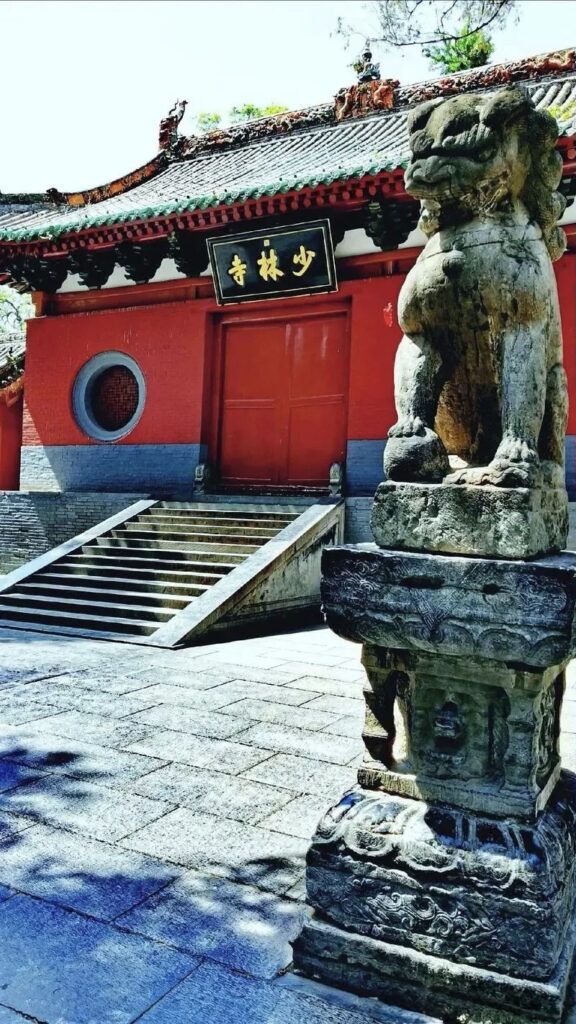
3. Architectural Layout
The main temple complex covers approximately 57,600 square meters, aligned along a central axis with seven courtyards, preserving architectural elements from the Song, Ming, and Qing dynasties.
Key structures include:
- Mountain Gate (built in 1735, inscribed by Emperor Kangxi)
- Hall of Heavenly Kings (housing statues of the Four Heavenly Kings)
- Mahavira Hall (rebuilt in 1986, dedicated to the Three-Body Buddha)
- Bell and Drum Towers (rebuilt in 1994 and 1996 respectively)
- Standing in Snow Pavilion (associated with the legend of Huike severing his arm in search of enlightenment)
- Thousand Buddha Hall (home to rare Tang Dynasty murals)
To the west lies Pagoda Forest, the largest ancient tower complex in China, with over 230 stone pagodas dating from the Tang to Qing Dynasties, spanning more than 20,000 square meters.
4. Cultural Significance and Global Impact
Shaolin Temple is globally renowned for its integration of Zen (Chan), martial arts, and traditional medicine. The phrase “All martial arts under Heaven originate from Shaolin” reflects its legendary status. Initially developed for physical training during meditation, Shaolin Kung Fu evolved into a complete martial arts system. The temple preserves over 500 Ming-era murals and numerous inscriptions and steles from the Tang and Song periods, offering immense historical value.
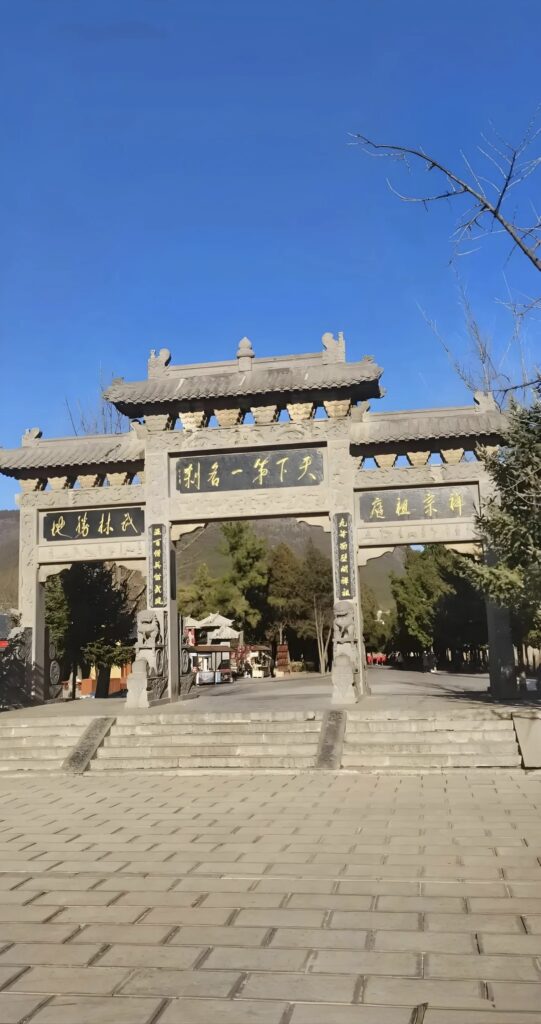
5. Historical Development Timeline
A. Formation and Early Growth (Northern Wei to Tang Dynasty)
- 495 AD: Founded by Emperor Xiaowen to house Indian monk Buddhabhadra.
- 6th Century: Bodhidharma allegedly meditated for nine years, founding Chan Buddhism. Legends like “Crossing the Yangtze on a Reed” and “Standing in Snow” originate here.
- Tang Dynasty: Imperial grants and recognition after Shaolin monks aided Emperor Taizong in battle; Shaolin Kung Fu gains prestige.

B. Evolution During Song and Yuan Dynasties
- Song Dynasty: Chan Buddhism flourishes. Martial arts integrated with Zen practices, forming the tradition of “Zen and Martial Arts as One.”
- Yuan Dynasty: The temple receives imperial patronage; over 2,000 monks reside here. Japanese monks travel to Shaolin, spreading its teachings abroad.
C. Prosperity and Decline (Ming and Qing Dynasties)
- Ming Dynasty: Shaolin martial arts reach their peak. Monks join battles against pirates and rebels. Present-day architecture largely stems from this era.
- Qing Dynasty: Mixed imperial attitudes toward Shaolin. Late Qing chaos and war lead to the temple’s decline.
D. Modern Destruction and Rebirth (20th Century)
- 1928: Warlord Shi Yousan’s forces burn down large parts of the temple, including the Mahavira Hall and Sutra Pavilion.
- Post-1949: The temple lies dormant but martial arts traditions survive among the people. The 1982 film Shaolin Temple reignites global interest.
E. Contemporary Revival and Globalization (1980s to Present)
- 1987: Religious activities resume; the temple undergoes restoration. Abbot Shi Yongxin spearheads modernization and heritage protection.
- Global Outreach: Shaolin establishes cultural centers abroad (e.g., USA, Germany), teaches martial arts and Chan, and forms international discipleship networks.
- Controversies: Commercialization and branding raise concerns, yet also enhance global visibility.
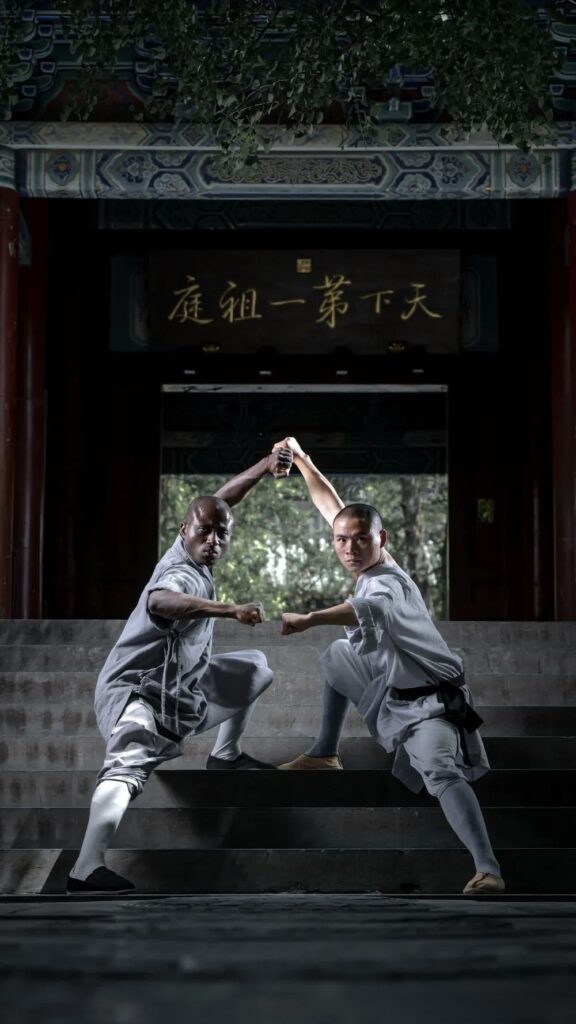
Key Symbols:
- Martial Arts: 72 secret techniques, Yi Jin Jing, staff methods
- Zen Buddhism: A spiritual lineage rooted in meditation
- Architecture and Art: Pagoda Forest, murals, and steles contribute to Shaolin’s designation as a World Heritage site
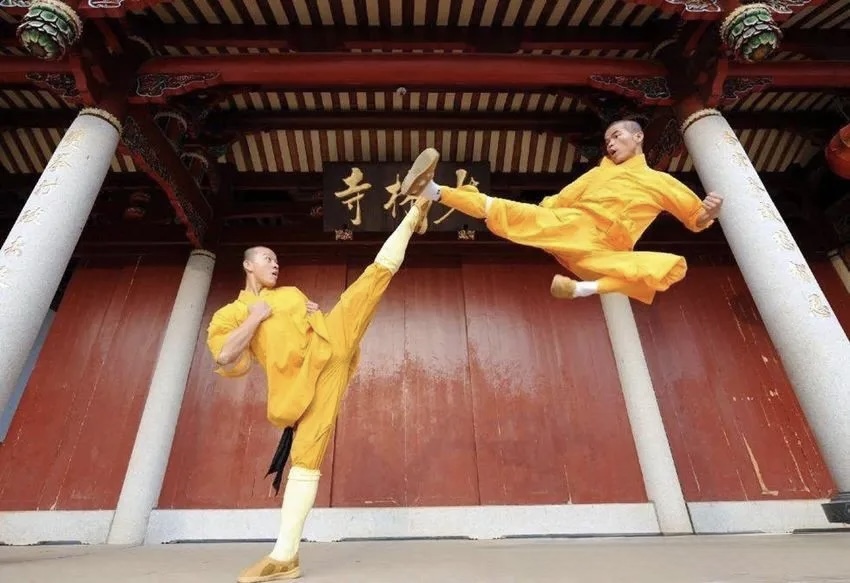
Shaolin Temple’s legacy mirrors the sinicization of Buddhism and the intersection of religion, politics, and culture. Today, it stands as a living symbol of Chinese spiritual heritage and a global ambassador of Kung Fu.
The Evolution of Shaolin Kung Fu
The development of Shaolin Kung Fu follows four primary stages: Germination, Formation, Peak, and Transformation. Its core philosophy blends Zen and martial arts, transitioning through practical combat, performance, and health cultivation.
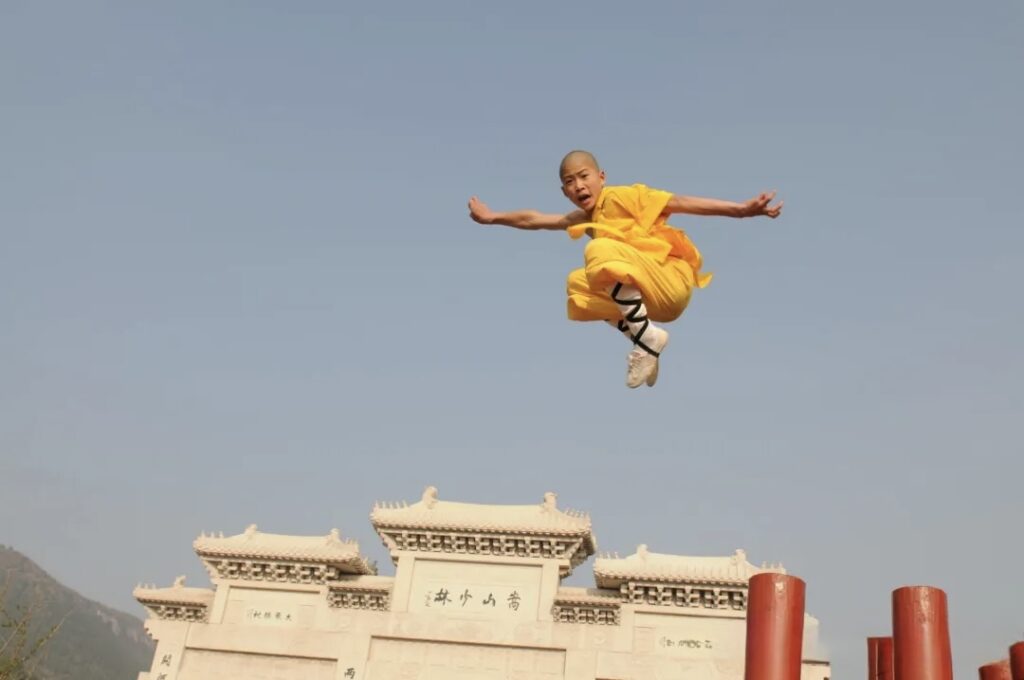
1. Germination Period (Northern Wei to Sui Dynasty)
Monks like Huiguang and Sengchou were already skilled fighters. Martial practices began as means of exercise and temple defense, integrating with local practices like breathwork and grappling.
2. Formation Period (Tang to Song Dynasty)
During the Sui-Tang transition, 13 Shaolin monks aided the Tang court, earning official recognition. In the Song Dynasty, monks like the “Zunsheng Unit” fought against invaders, formalizing techniques like staff combat.
3. Peak Period (Ming to Early Qing Dynasty)
Shaolin martial arts thrived over 300 years:
- Monks fought pirates and rebels, refining their techniques.
- Masters like Yu Dayou shared martial wisdom, enhancing Shaolin’s system.
- Systems expanded to include boxing, staff, sword, qigong, and agility.
- Abbot Xue Ting Fuyu institutionalized martial practice within temple law, ensuring generational transmission.
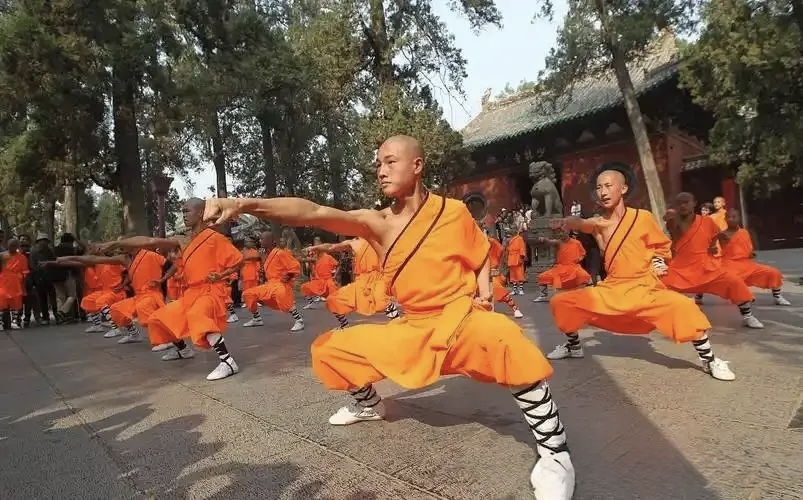
4. Transformation Period (Late Qing to Present)
- 1928: The temple was destroyed by fire; martial monks scattered.
- Post-1949: Martial arts taught in schools; cultural value preserved.
- 1980s–Today: Kung Fu becomes global through film, international schools, and cultural diplomacy.
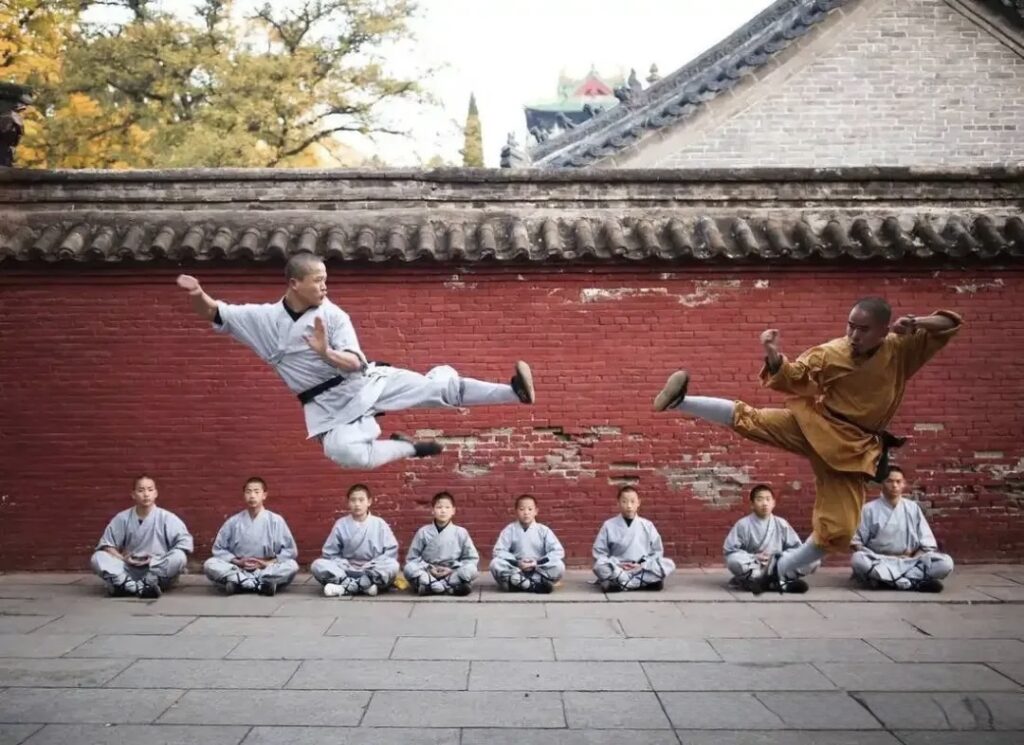
Summary:
Shaolin Kung Fu began as a way for monks to stay fit and protect the temple, rose to fame through royal favor, matured through battlefield experience and religious structure, and transformed into a globally recognized symbol of Chinese culture and heritage.
Recommended products
-
Blessing Bell — Tibetan Brass Pendant
Original price was: $5.00.$4.00Current price is: $4.00. -
Tantric Brass Vajra for Spiritual Practice
Original price was: $7.00.$5.00Current price is: $5.00. -
ZenFlame Solid Walnut Incense Burner – Handcrafted Chinese Wooden Censer for Aromatherapy & Meditation
Original price was: $38.00.$32.00Current price is: $32.00. -
Tibetan Meditation Bowl – Mantra Singing Bowl with Mallet
Price range: $42.00 through $289.00




